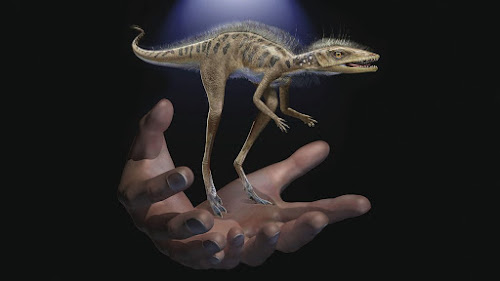'Tiny insect slayer' family member of dinosaurs and pterosaurs would certainly have in shape in the hand of your hand
Huge dinosaurs and pterosaurs have a newly found relative: a palm-size pipsqueak of a reptile, a brand-new fossil reveals.
Also the name of the recently explained reptile — Kongonaphon kely, or "tiny insect slayer" in Malagasy and Greek — is an homage to its diminutive dimension, as well as its most likely diet of hard-shelled bugs, the scientists said.
This tiny monster reveals that the dinosaurs and pterosaurs — which reached the dimensions of institution buses and planes, specifically — come from from teensy animals, the scientists composed in the study.
"There is a basic understanding of dinosaurs as being titans," study lead scientist Christian Kammerer, a research study curator of paleontology at the North Carolina Gallery of All-natural Sciences, said in a declaration. "But this new pet is very shut to the divergence of dinosaurs and pterosaurs, and it is shockingly small."
K. kely, a local of Madagascar about 237 million years back throughout the Triassic duration, measured simply 4 inches (10 centimeters) high. Its composition may help to discuss how pterosaurs accomplished trip and why both dinosaurs and pterosaurs had a feather-like fuzz covering their skin, the group kept in mind. (As a pointer, pterosaurs are reptiles that lived at the same time as dinosaurs, but they are not actually dinosaurs.) Cara Depo Dan Withdraw di Situs Judi King88bet

The pipsqueak's fossils were found in the Morondava Container of southwestern Madagascar in 1998 by a team of scientists, led by study co-researcher John Flynn, the Frick Curator of Fossil Mammals at the American Gallery of All-natural Background (AMNH) in New York City (at the moment Flynn operated at the Area Gallery in Chicago). An evaluation of its composition exposed that K. kely comes from the clinical clade called Ornithodira, whose participants are the last common forefathers of the dinosaurs and pterosaurs and their descendants.
The very early Ornithodira, however, are badly known, because there are couple of known specimens such as K. kely that day to the beginning of this family tree.
he exploration of K. kely sheds light on the very early development of the ornithodirans, Kammerer said, including that body dimension reduced dramatically very early in the background of the dinosaur-pterosaur family tree.
Kammerer included that this "miniaturization" occasion most likely had its benefits, at the very least when it concerned capturing victim. For instance, the tiny matched damages on K. kely's closely-packed, cone-shaped teeth recommend that it consumed bugs. Essentially, K. kely most likely removaled right into locations that fit its small frame and bug yearnings, which were most likely various compared to the locations often visited by its mainly carnivorous contemporaries.

